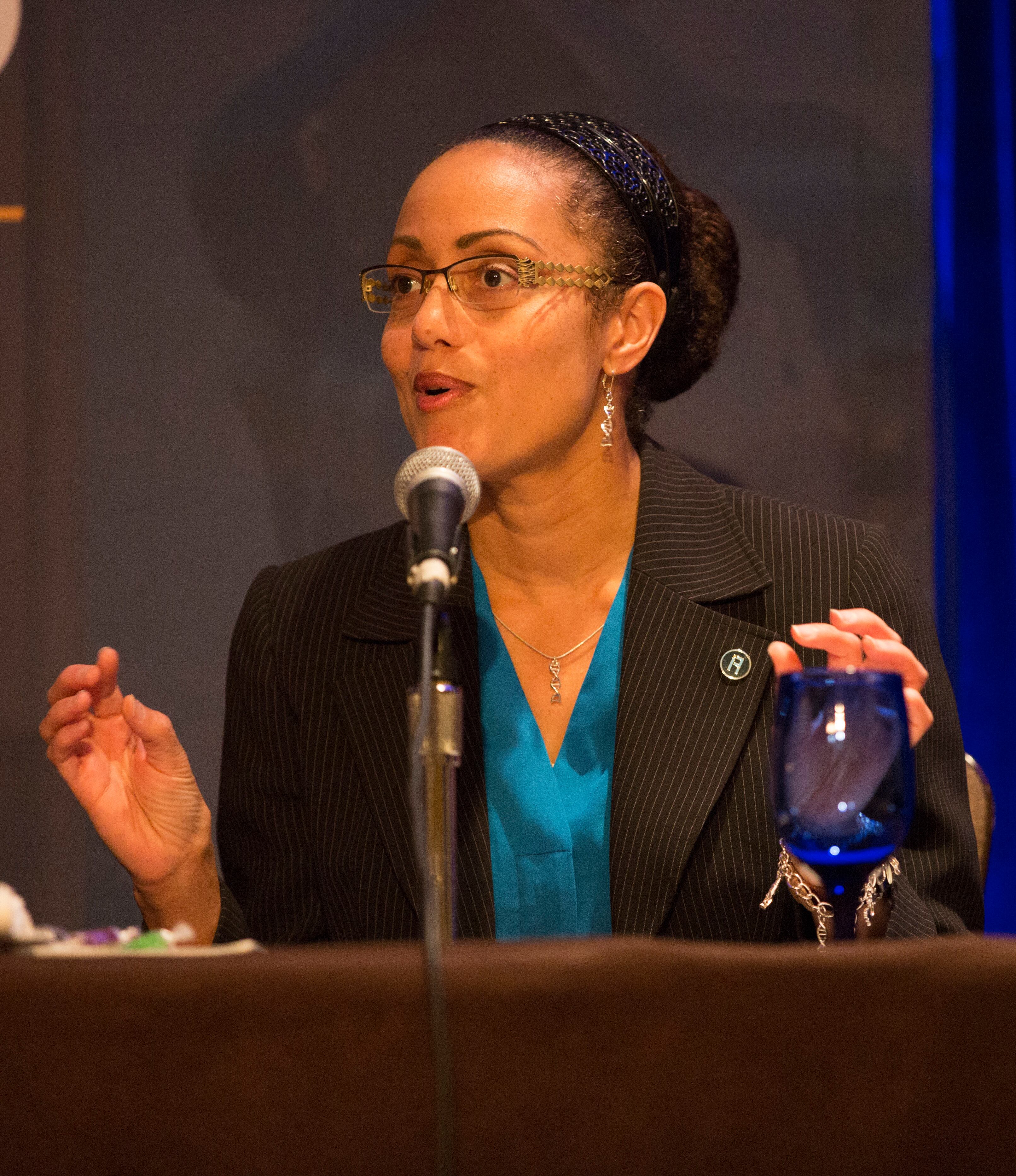WASHINGTON — Biotechnology? Artificial intelligence? Precision weapons?
For industry looking to align its research and development money to the needs of the U.S. Department of Defense, figuring out what Pentagon leadership is interested in is vital intelligence. And at the Sept. 6 Defense News Conference, leaders from four key Pentagon innovation centers laid out what their groups would be focusing on in the next few years.
The experts — Fred Kennedy, acting director of the Defense Advanced Research Projects Agency’s Tactical Technology Office; Sean Singleton, director of business development and marketing for the Defense Innovation Unit Experimental, or DIUx; Col. Joe Capobianco, chief of staff with the Army’s Rapid Capabilities Office; and Stacey Dixon, deputy director of the Intelligence Advanced Research Projects Activity — offered a range of options for industry to focus on, while giving hints about where their individual organizations are in terms of technology maturation.
Click here for more coverage from the Defense News Conference.
Dixon identified two key areas — artificial intelligence, and what she called “synthetic biology,” or biological innovations.
For IARPA, the intelligence community’s answer to DARPA, the need for AI is obvious. The amount of data coming in from intelligence sources is often compared to a tsunami, and the ability to rapidly sort through that and flag analysts with relevant pieces of information is vital for the future. But Dixon pointed out reliance on such systems comes with potential risks, as adversarial nations will seek to manipulate data on which it knows the U.S. is working.
The challenge with synthetic biology, Dixon said, is that “technically someone’s accident could have a huge impact on the world, and it’s a lot harder to defend against that.” In other words, it’s not just nations that can impact this realm, but individuals using publicly available laboratory technologies.
That doesn’t mean other nations aren’t attempting to play with the human genome, and Dixon acknowledged that there needs to be “more of a concerted investment” from the U.S. in learning about this technology in order to avoid falling behind potential near-peer competitors.
“Our country is wonderful, but we do put all sorts of constraints on the research that’s allowed here. That’s probably for good reasons, for moral reasons,” she said. “But there are other countries that don’t have those constraints. We have to understand what is capable, what they’re doing. We’re seeing a lot of investment internationally including in countries that we might consider adversaries, so we want to make sure that we’re watching it.”
Those two focus areas were reiterated by DIUx’s Singleton, who noted his office is working with IARPA on some machine-learning projects. In addition, DIUx — created to be an outreach arm for the Pentagon to the commercial technology sector — is doing “a lot” of work in the space realm, Singleton said.
“When you look at folks like [Blue Origin head Jeff Bezos] and Richard Branson and Paul Allen and other folks, taking advantage of some of the investments they themselves are doing and bringing it back beyond the wall to us to where we could go ahead and capitalize off of that, those are the things we’re trying to do,” he said.
Singleton added that DIUx is working with the Army’s Rapid Capabilities Office on countermeasures for unmanned systems at the direction of Secretary of Defense Jim Mattis, while Capobianco emphasized that the RCO is looking at new technologies for electronic warfare.
Capobianco said that focus is being driven by the fact that “we know we have a capability gap based on occurrences in Eastern Europe.”
RELATED

Similarly, his office is looking at positioning, navigation and timing. Across the Pentagon, there is concern that potential adversaries have studied and learned how to counter the U.S. advantage in precision munitions, or even jam GPS capability upon which fielded weapons and forces rely.
“That’s an area of real risk to us, and they’ve set up systems to create a gap or take away some of that,” Capobianco said.
While IARPA, DIUx and the RCO are looking more near term, DARPA’s mission is to look far into the future. But Kennedy noted there are still overlaps in the areas of biotechnology and cyber capabilities, as well as other topics “that are particularly fascinating,” but he declined to go into them.
More broadly, DARPA is focused on two ideas, Kennedy said. The first is the speed of decision ― making the decision loops move more quickly at both the operational and acquisition level.
“We talk about getting capability to the war fighter. We want to do that as quickly as possible. We can’t do these decade-long transitions. We are going to be outfoxed by our adversaries,” Kennedy said.
The other is the idea of disruption; not at the technology level but at what Kennedy called the “architectural and enterprise levels,” finding ways to get ahead of a near-peer’s entire future strategy. “We have orders of battle extent today in our military that need to be looked at to determine which of them are actually going to work in future warfare,” he said.
Other areas that were of interest include using laser and high-powered emissions for missile defense, something Kennedy said DARPA is working on developing, as well as hypersonic weapons, which Capobiano said is a major focus across the department.
Notably, the four made it clear they have all worked together on projects in the past, with several collaborations ongoing. And while there may be areas of overlap, Capobiano said that isn’t a problem.
“Redundancy isn’t a bad thing, because in one of the classic military innovation models, [you] have people working on the same things, select best of breed and whichever pops out soonest or with the best capability,” he said. “That’s what we’re looking to do.”
Aaron Mehta was deputy editor and senior Pentagon correspondent for Defense News, covering policy, strategy and acquisition at the highest levels of the Defense Department and its international partners.








